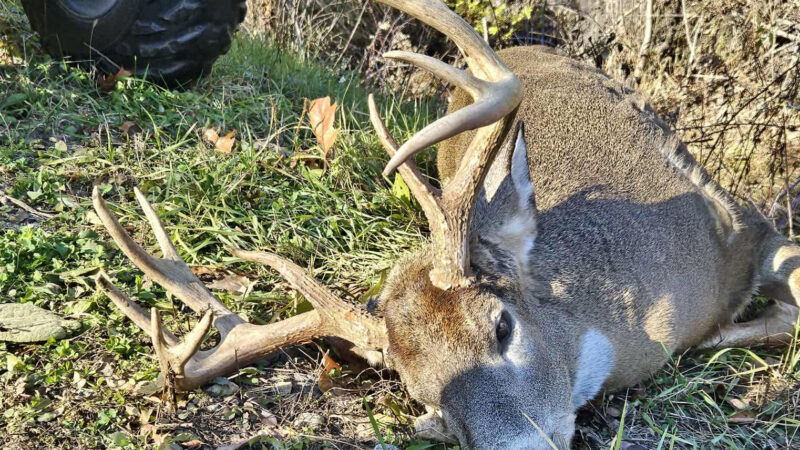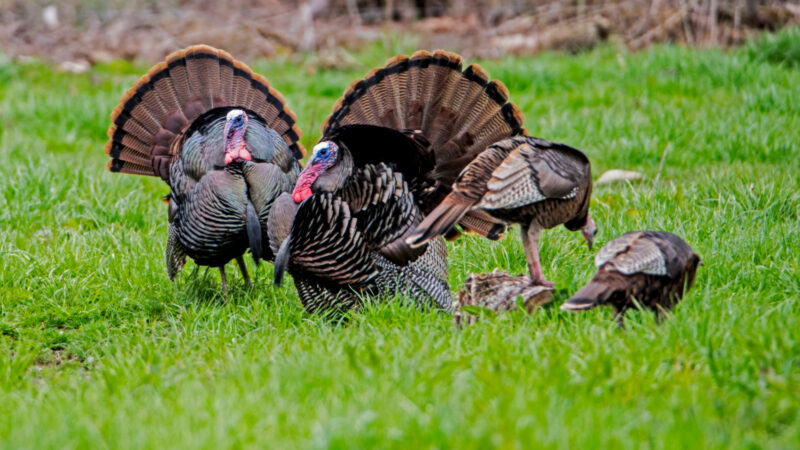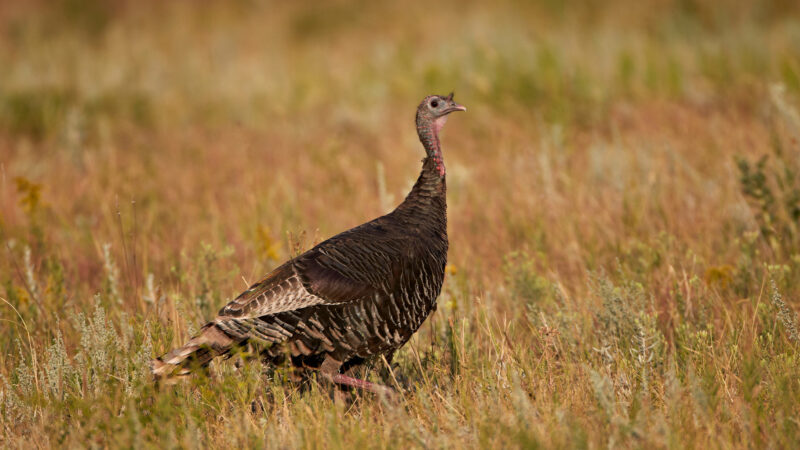Coydog, Coywolf, or Coyote? A Complete Guide to Eastern Canids
Outdoorsmen and women have long whispered about an elusive critter they call a coydog — an animal that’s part dog and part coyote. These medium- to large-sized canines usually have a coyote’s triangular upright ears and long muzzles, but they’ll also have unusual coats or markings, along with other physical characteristics that can only be described as dog-like. Every now and then a hunter will shoot one, or someone will find one dead on the roadside, and they’ll occasionally share photographs to social media sites and online forums.
Sometimes these critters turn out to be nothing more than a unique or strange-looking coyote, and more than a few domestic and feral dogs have been misidentified as wild predators over the years. (Wolves, foxes, coyotes, dogs, dingoes, jackals, and the other 29 members of the Canidae family are all closely related, and it can sometimes be difficult to tell these canines apart.) Other times, DNA testing reveals that a strange-looking coyote is actually a legitimate coyote-dog hybrid that is 50 percent coyote and 50 percent dog.
These instances are rare in the wild, wildlife biologists say, noting that most coydogs are bred deliberately by humans. But these same experts also point to historical evidence of coyotes successfully interbreeding with dogs and wolves as they expanded their range into the Eastern United States. So, while the coydog is a real animal, the truth behind these hybridized canines is much more complicated, and the term is often overused or misconstrued.
What Is a Coydog?
Wildlife biologist Brehan Ferfey, who works as the furbearer project leader for the Vermont Fish and Wildlife Department, tells Outdoor Life that the terms “coydog” and “coywolf” originated roughly 80 to 100 years ago. This is around the time when coyotes, a historically western species, started showing up in the Eastern United States.
“Coydog is not a term that we would use,” Ferfey says. “It is kind of an antiquated term.”
She explains that today, these canines would be more accurately described as Eastern coyotes (Canis latrans), which are one of 16 North American subspecies of coyote recognized by the U.S. Fish and Wildlife Service. Ferfey cautions, however, that there is still some debate among scientists surrounding the taxonomy of wolves and coyotes.
The coydog nickname lingers because hybridization with other canines (both wild and domestic) is an important part of the coyote’s natural history. Scientists now believe that Eastern coyotes are a hybrid species at their core, since they’re a byproduct of interbreeding between Western coyotes, wolves, and, to a lesser extent, domestic dogs.
Several studies have tried to put a finer point on this genetic breakdown. The Massachusetts-based authors of a 2016 study concluded that a typical coyote living today in the northeastern U.S. “has roughly 60 percent genetic influence from coyote, 30 percent wolf, and 10 percent dog.” The authors explained that this genetic mixture is the result of interbreeding that occurred nearly 100 years ago, however, and that “the [eastern coyote] now has little genetic input from its parental species across the majority of its range.”
This interbreeding also explains why Eastern coyotes are larger and more wolf-like than their western counterparts.
“On average, they’re about 10 pounds heavier [than western coyotes],” Maine-based wildlife biologist Shvenell Webb told Outdoor Life in 2021. “They eat deer and show more color variation. Some exhibit a pale gray pelage similar to western coyotes, but others are blond, red, and even black.”
The question, then, is what made coyotes breed with wolves and dogs in the first place?
How Killing Wolves Created the Modern Coydog
Coyotes in North America are thriving, and the species is arguably faring better today than it has at any point in history. These wild canines are incredibly adaptable omnivores, which has allowed them to expand their native range throughout the continent while the ranges of other native predators like wolves and grizzly bears have shrunk drastically. This reduction in competition from apex predators is actually what opened the door to pioneering coyotes in the first place.
Coyotes were originally native to the prairies and deserts of Western and Central North America. Their historic range stretched all the way from southern Canada south into Mexico. In fact, before Europeans arrived en masse on the continent during the 15th century, there were no coyotes living on the West Coast or east of the Mississippi River — places where wolves were the dominant canine predators.
After European colonization everything changed. Colonists, who had clashed with Eurasian wolves in Europe, recognized their North American cousins and instinctively killed the wolves they came across as they converted forests to farmland. This gave way to the U.S. government’s systematic extermination of the species, and by the start of the 20th century, wolves were mostly extirpated from the eastern U.S. Around 1940, coyotes started showing up east of the Mississippi for the first time. This coincided with the decline of wolves; by the 1960s the Lower 48’s last remaining wolf packs had retreated to the dense woods of upper Michigan and northern Minnesota.
The extirpation of wolves and other native predators created a void in the ecosystem that coyotes were eager to fill, says Ferfey. And they began trickling eastward.
“The hybridization aspect of it is actually super fascinating,” Ferfey tells Outdoor Life. “With the changing of the landscape and the disappearance of some of the larger predators in the area, it was a habitat that coyotes could easily adapt to, so they had that advantage … There were two documented routes that they took, one going up into Canada and one just south of Canada.”
Additional research has shown that some Western coyotes also took a more southerly route, with these two routes converging somewhere around Virginia. As they passed through the remaining pockets of wolf habitat, Ferfey explains, they occasionally interbred with their larger canid cousins.
Wildlife biologists now believe this interbreeding with wolves was done out of necessity, as the pioneering Western coyotes would have had a difficult time finding other coyotes to mate with. In some cases, the logic goes, these coyotes had to settle for the domestic dogs they came across in their travels.
This theory explains the trace amounts of dog genes found in today’s eastern coyotes, but it doesn’t mean the two species still interbreed with any regularity today. Now that eastern coyotes are a well-established species (with 5,000 to 7,000 living in Vermont alone, according to VFWD) with plenty of available mates, experts say the chances of a coyote breeding with a dog in the wild today are very slim.
Are Coydogs Still Seen in the Wild Today?
Dr. Stan Gehrt is a professor of wildlife ecology at Ohio State University and the leader of OSU’s Urban Coyote Research Project, which is one of the longest-running studies on coyotes in the U.S. During the last 23 years, Gehrt and his team have captured, tagged, and collected genetic samples from more than 1,500 coyotes in the Chicago area. He says they’ve only seen a couple cases where a coyote had some minor influence of dog genetics, and that this has been the exception and not the norm.
“Basically what the geneticists have found is that most of the coyotes east of the Mississippi have varying degrees of small amounts of dog DNA in them,” Gehrt says. “But it’s a small percentage, and in some cases, it’s only a fraction of a percent.
“So, when you use the term ‘coydog,’ people tend to think of that as what we call an F1 hybrid, which is the offspring of a coyote and a dog breeding together,” Gehrt continues. “But these coyotes are not that. This is historic, past breeding from many, many generations ago … and it can be misleading and deceiving for people to call them ‘coydogs.’”
There are exceptions, but Gehrt says that during his long career studying furbearers, he’s only come across two coydogs that were genetically confirmed to be true F1 hybrids. And in both cases, the canines had been bred in captivity.
“There was also someone in Alaska who for a few years was sending me [videos] about a breeding program they had up there, where they were intentionally breeding their dogs to coyotes to create a super hunting dog. They had F1s, F2s, and went all the way down to F3s,” Gehrt says. “The point is that it’s extremely rare for a dog and a coyote to actually mate [in the wild]. In my experience, it’s almost always been the result of someone intentionally doing that breeding.”
Are Coydogs Legal?
The laws around breeding and raising coyote-dog and wolf-dog hybrids as pets in the U.S. vary by location. Many states, including Ohio and Oregon, consider them to be legal pets, while others like Florida and Missouri closely regulate the two hybrid species. And in several states, including Kentucky, Illinois, and Florida, it’s illegal to breed or possess a coydog or wolfdog in captivity.
Although some say these hybrid canines can make great pets, a lot of that depends on the owner. Coydogs and wolfdogs can be unpredictable, destructive, and aggressive, especially around livestock and small children. This has led some cities and counties to outlaw these hybrids as pets, even in states where they are otherwise considered legal to own.
Can Coyotes and Dogs Breed?
Gehrt points to several reasons for why coyotes and dogs make incompatible mates in the wild. For starters, there are only so many domestic dogs that would be willing to approach a coyote, much less mate with one. Smaller breeds like terriers and Chihuahuas are more likely to run away from a coyote, and even the boldest dogs would be too small in stature to actually mate with one.
Biological Differences Between Coyotes and Dogs
A lot of dogs (both large and small) are also sterile, since most of today’s dog owners spay or neuter their pets. The American Kennel Club estimates that around 80 percent of domestic dogs in the U.S. are spayed or neutered, so the majority couldn’t reproduce with a coyote even if they tried.
Gehrt does bring up feral dogs which, for obvious reasons, would be more likely to mate with a coyote than a domestic dog. He says that in places like the Southeastern U.S., where packs of wild dogs are more common, the chances for interbreeding go up slightly. But even then, Gehrt points to the different breeding cycles that coyotes and dogs have. Dogs can breed year-round, he says, while coyotes only have a narrow breeding window during the winter months.
“Once you get into March, the females are definitely done, and the males start declining pretty quick,” Gehrt says. “For the rest of the year, the females aren’t cycling and the males aren’t producing sperm. So, even if you did have an estrous dog running around out there, they couldn’t do anything about it.”
Coyotes Mate for Life
An even bigger reason for why coyotes and dogs almost never mate in the wild is because, as Gehrt puts it, “coyotes have standards.”
What he means is that coyotes are truly monogamous and form breeding pairs for life. This makes them unique from every other canine in North America. Even wolves, which have complex pack structures that rely on dominant males and females doing the breeding, Gehrt says, have been known to cheat. Dogs, on the other hand, are polygamous to the point of being promiscuous, and some males will hump just about anything that moves (along with some things that don’t).
“We haven’t documented a single case of a litter [of coyotes] coming from multiple parents,” Gehrt says. “They’re pairing up and they stay mated together until one of them is dead. They’re passing up opportunities with other coyotes, so they’re clearly not going to mate with dogs.”
These monogamous relationships extend well beyond the physical act, Gehrt explains. Unlike male dogs, male coyotes are totally invested in their young and help raise their litters along with the females. This means that even if a dominant male dog were to somehow mate with a coyote, the chances of those coydog puppies surviving to adulthood would be much lower than typical coyote pups.
Fully grown coydogs would likewise be less capable of surviving in the wild because their wildness would be watered down with domestic genes. They would also be less likely to produce more coydogs in the future because F1 hybrid animals are generally less viable and sometimes completely sterile.
In other words, it is plausible for the occasional coydog to slip through the biological cracks, but it’s also very unlikely.
Coydog FAQs
A coydog typically has a coyote’s upright ears and long muzzle, but they also have unusual coats and other physical attributes that look more like a domestic dog. They often have the same short, bushy tail that coyotes have, and they come in all different sizes depending on the dog they breed with.
Coydogs aren’t inherently dangerous compared to normal coyotes, which are typically fearful of humans and are more likely to run away from a person than attack them. However, coydogs can be more dangerous when kept as pets because they maintain some of a coyote’s wild instincts while losing their fear of humans.
The term “coywolf” is similar to coydog in that it is sometimes misused to describe an Eastern coyote. A true coywolf is 50 percent coyote and 50 percent wolf. The two species are known to have interbred historically, but they rarely do so today.
Final Thoughts on Coydogs
Coydogs are real animals, but the term is often used incorrectly. A true coydog is a coyote-dog hybrid that’s 50 percent coyote and 50 percent dog. These hybrid canines have been bred in captivity, but they’re incredibly rare in the wild. When these mixes do occur, the offspring are much less likely to survive and procreate.
Read Next: The Best Coyote Calibers
Technically, all Eastern coyotes are part coyote, part wolf, and part dog. Wildlife biologists believe this is because coyotes occasionally interbred with wolves and dogs as they expanded eastward from their historic range in the deserts and plains of North America. Eastern coyotes still contain trace amounts of dog genetics in their DNA — hence the persistent coydog term — but a host of biological barriers make it highly unlikely for dogs and coyotes to breed in the wild today.
The post Coydog, Coywolf, or Coyote? A Complete Guide to Eastern Canids appeared first on Outdoor Life.






